Beverly Gray's Blog: Beverly in Movieland, page 67
May 31, 2019
New York as an Animated Playground: Discovering “Spider-Man: Into the Spider-Verse”

I’m just back from New York City, a vibrant metropolis where social diversity is the name of the game. On one recent trip to the Big Apple I walked into a soul food buffet on Malcolm X Boulevard in Harlem, and discovered—next to the fried chicken and spare ribs—a full assortment of vegan delights. Yes, tofu, quinoa, and kale salad. There was a big sign advertising fresh bagels daily, and the counterman was Korean. Only in New York, right?
Along with its lively ethnic mix, New York offers a vibrant swirl of bodies in motion. The streets teem with pedestrians, along with cars, trucks, bikes, and electric scooters. Horns honk at all hours. Neon lights flicker. And those wonderful glass towers that scratch the sky make a dramatic backdrop for what’s happening above and below ground, as well as at ground level. Life in New York City just doesn’t quit.
While flying to New York from the left coast, I finally encountered a movie I’d never bothered to see at the multiplex. Spider-Man: Into the Spider-Verse had always sounded to me like yet another superhero movie, and I’d already seen plenty of those. And since it was a work of animation, it promised to be something of a kiddie flick. But that Oscar victory (over a Pixar film!) and the strong enthusiasm of my students encouraged me to check it out. Not that a seatback screen was the right way to enjoy a film first released in 3-D. But at least I could catch a glimpse of what everyone seemed so excited about.
I knew, going in, that this Spider-Man was a tribute to multiculturalism, featuring Miles Morales, a teenaged Brooklynite who is half-black, half-Puerto Rican. Far be it from me to explain a complicated plot that features multiple Spider-Man figures who hail from several alternate universes. There’s Spider-Woman, Spider-Man Noir, SP//dr (a young cutie-pie who represents Japanese anime stylistics), and the goofy Peter Porker, also known as Spider-Ham. Moreover the grown-up Peter Parker, the original Spider-Man himself, appears in two very different incarnations, both as a vigorous hero and as something of a sad flop. Needless to say, there are also villains of all stripes, as well as a nefarious plot that must be stopped in its tracks. The head-scratching array of Marvel comic book characters is augmented by the more realistic folks of Miles Morales’ daily world. There’s a thoroughly convincing relationship between Miles and his dad, a NYPD officer who’s both loving and at times totally exasperating to his son. (Imagine having to say “I love you” to your cop-pop in front of your way cooler classmates.)
But beyond the quirks of plot and characterizations, I quickly spotted that this film is a paean not only to comic books of old but to the glitz and glamour (as well as the grit and crud) of New York City. I’ve simply never seen an animated feature that looks like this one. It’s loud; it’s bold; the style of the artwork changes from moment to moment, sometimes capturing the SHAZAM look of comic strips, sometimes verging into psychedelia. They say the neon lights are bright on Broadway, and Spider-Man: Into the Spider-Verse brilliantly conveys the energy of Times Square when the sun goes down. To say this film is eye-popping doesn’t do it justice. I only wish I could experience it in 3-D someday soon. But I’ll probably have to wait until my next trip to NYC to experience something of the wild and crazy city where Max Morales, aka Spider-Man, makes his home.
Published on May 31, 2019 13:08
May 28, 2019
Mary Poppins Redux (A Whole Not-So-New World)
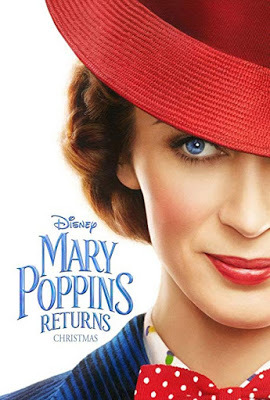
This past weekend, moviegoers could for the first time check out the live-action feature film version of Disney’s Aladdin. I didn’t rush to see it, and I doubt that I will. But I remember so vividly the day in 1992 when I took my kids (ages 14 and 10) to enjoy the animated Disney original, starring Robin Williams as a very mercurial—and very blue—genie. We were lucky enough to experience Aladdin in a grand old movie palace now used by the Disney company for major premieres. The El Capitan, built on Hollywood Boulevard in 1926, has been fully restored to all its Spanish Colonial Revival glory. Williams’ madcap humor, the Menken/Ashman/Rice songs, and above all the film’s brightly swirling animation made the three of us feel so happy that we didn’t much want to go home. Instead, we lingered under the neon-lit theatre marquee, singing and dancing.
We’re now in an era when Disney, trying to squeeze every last buck out of every last project, has taken to re-making its animation classics as live-action features, with CGI used to help the magic along. The live-action version of Beauty and the Beast was passable,, but I hardly saw the point of moving beyond the splendidly animated original. So why would I want to watch Aladdin and Jasmine pursue their courtship aboard a CGI-enhanced magic carpet?
I feel similarly about Mary Poppins. I read the books as a youngster, and then (as a high school senior) totally fell in love with the Disney musical film. Yes, I knew full well that Julie Andrews was a bit too pretty and too amiable to approximate P.L Travers’ spit-and-polish nanny, who performs acts of magic almost despite herself. Still, I was so taken with the film’s whole ensemble (despite Dick Van Dyke’s sad stab at a Cockney accent) that Mary Poppins felt enchanting to me, and to many of my classmates. Doubtless, much of our enthusiasm had to do with the fact that we were on the brink of leaving for college. At a point in our young lives when we were about to cross the threshold between childhood and the world of adult choices, it seemed very special to linger in a world of sweet and solid family values.
Which made me very curious to see 2018’s Mary Poppins Returns.. I thoroughly approve of the sequel’s re-use of the charming home on Cherry Tree Lane, and have no problem with a script that features the now-grown-up Jane and Michael Banks Emily Blunt is an inspired choice as the updated but mostly unchanged Mary Poppins: she can sing well enough, and conveys a nice tartness that tempers the sugary Disney approach. But here’s my problem: the new film appears determined to mimic the original, only more so. Every song and dance number seems required to replicate (in spades) what went before. If the original Mary and her charges jumped into a chalk picture that morphed into a cleverly animated sequence, Mary Poppins Returns must do something similar, played out at greater length. If the original had Uncle Albert (the incomparable Ed Wynn) floating on the ceiling, the sequel must feature Meryl Streep singing while upside down. Lin Manuel Miranda and a gaggle of lamplighters perform a lively rooftop dance number that’s clearly modeled on Van Dyke and his chimneysweeps. And the bank scenes are longer, fuller, scarier, and more determined than ever to show the evils of corporate capitalism: an ironic twist, given Disney’s reputation as a company that sweeps up everything in its path.
Published on May 28, 2019 13:03
May 24, 2019
Sisters in Arms: Remembering the League of Wives

We’ve all seen our share of Vietnam movies. Once the war was finally over, Hollywood released a flood of them. There were ambitious ones that dropped us into the middle of the fighting—The Deer Hunter, Apocalypse Now, Platoon—and tried to convey the physical and emotional realities of that faraway war. There were films like Born on the Fourth of July (based on the true story of Sgt. Ron Kovic) that highlighted revolts against the war by young men furious at what their own government was asking of them. The poignant Coming Homefocused on the home front, where the wife of a Marine captain evolved during his tour of duty into a more independent woman. In finding her own path, she fell in love with a young vet who’d left Vietnam a paraplegic. This heartfelt 1978 drama won Oscars for stars Jane Fonda and Jon Voigt.
The physical and emotional costs of Vietnam are also underscored in a new book by my friend and colleague, Heath Hardage Lee. She’s currently rocking the media with The League of Wives , a well-researched history of the loyal military spouses who waited—as much as six years—for their husbands to come marching home from captivity by the Viet Cong. Here’s the book’s subtitle: The Untold Story of the Women Who Took on the U.S. Government to Bring Their Husbands Home from Vietnam. As this suggests, these women (over a hundred in all) turned to activism as a way to alert the world to their husbands’ plight. Their men, most of them Navy and Air Force pilots, had been shot down and incarcerated, often in the notorious Hanoi Hilton, where torture was rampant, medical services were few, and (in violation of the Geneva Convention) oversight by the International Red Cross was not allowed. Even a basic accounting of prisoners’ whereabouts was denied the worried wives and family members back home.
What makes The League of Wives so striking is that it’s about women well accustomed to following the rules. Politically and socially conservative, they had been carefully taught that the best way to support their spouses was to dress nicely, respect military rank, and steer clear of politics. Once their husbands were shot out of the sky, these women—still unclear as to whether they were wives or widows—were instructed by the top brass to remain tight-lipped and allow politicians to sort out the problem. But, as months and years passed, staying quiet seemed like the wrong strategy. Presidential administrations largely paid lip-service to their concerns, and the military actually toyed with the idea of denying them access to their husbands’ accumulating paychecks. That’s when the women, many of whom had young children to raise, banded together and began making noise.
The wives quickly discovered the value of the mass media in putting their husbands’ plight before the world. Soon they were sending delegations overseas to make their case to diplomats meeting in Paris and Stockholm. And, much as they shrank from affiliating with the anti-war movement, they took advantage of its connections with Hanoi in order to ensure a flow of mail to and from their captive spouses. When the men finally returned in 1973, they found their wives had developed strong new capabilities. Even the once-shyest was now comfortable in the corridors of power.
The evolution of these women would make, of course, for a fascinating movie. That’s why the very enterprising Reese Witherspoon has just optioned Heath’s book for a cinematic adaptation. Which should make for a “hidden figures” type movie I look forward to seeing.
On Memorial Day—Monday, May 27—Heath Hardage Lee will be speaking at the Richard Nixon Library as part of a program honoring the wives and mothers of American POWs. Here’s more info: https://mailchi.mp/nixonfoundation/b860feer3l-1299905?e=f5e67dc507
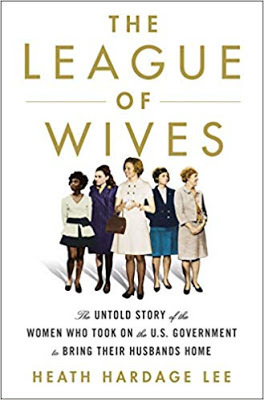
Published on May 24, 2019 12:54
May 21, 2019
The Many Sides of Rashomon

My friends are well aware that right now my favorite movie has to be The Graduate. After all, my book on this marvelous 1967 comedy (Seduced by Mrs. Robinson: How The Graduate Became the Touchstone of a Generation) came out in 2017. In the line of duty, I have watched The Graduate maybe 150 times, and have never failed to enjoy it. I’ve got loads of other favorites too. But for years I’ve had my own little pantheon of classics that I consider the best of the best. This triumvirate includes an American movie I’ve adored since childhood, as well as two foreign-language classics that never fail to awe me.
The American movie is Citizen Kane, a 1941 faux-biopic by twenty-six-year-old wunderkindOrson Welles, telling the story of a newspaper publisher’s rise and fall in a style that starts out rollicking and ends up poignant. One of the two foreign films on my short list is Federico Fellini’s mesmerizingly beautiful La Strada (1954), anchored by Giulietta Masina’s haunting performance as a good-hearted waif in a traveling circus troupe. And the other comes from Japan.
Akira Kurosawa made Rashomon in 1950, not long after the end of World War II. Its budget was paltry and the film was not well liked in the country of its origin. But it developed a passionate following both in Europe (where it was the hit of the Venice Film Festival) and in the U.S., where it won an honorary Oscar that was a precursor to today’s Best Foreign-Language Film category. I’m writing about it now because I’ve just learned of the death, at age 95, of Machiko Kyo, the one woman in Rashomon’s tiny cast. She played the aristocratic wife in a strange and brutal triangle that’s at the film’s center. Her long career included Mizoguchi’s classic Ugetsu and the role of an Okinawan geisha opposite Glenn Ford’s American military captain in Teahouse of the August Moon (an east-meets-west comedy in which Marlon Brando donned yellow-face to play a local interpreter). But it’s Rashomon for which she’ll be remembered.
Rashomon, an artful blending of two stories by Japanese master Ryunosuke Akutagawa, is set back in the days of the samurai, Central characters include two travelers, a samurai and his lady, who in the course of their journey encounter an audacious bandit, played to the hilt by the young Toshiro Mifune. The dramatic juxtaposition of these three leads to the death of the samurai, the rape of his wife, and the disappearance of a valuable dagger. But what exactly has happened? Before a legal tribunal, the bandit narrates an account full of derring-do, in which he emerges triumphant from a duel with the samurai. The wife’s version of the tale emphasizes noble self-sacrifice, with herself as the central figure. Even the dead samurai is heard from. Via a medium, he aggrandizes his own heroic role. But wait! It turns out there’s been a silent witness to the whole episode, and his account turns upside down everything that’s gone before.
Today the so-called Rashomon effect is so well-known that many of those who reference it have never seen the movie. And Kuroaswa’s storytelling powers are such that others continue to crib from his work, especially for movies in the western genre. Hollywood quickly turned Kurosawa’s epic Seven Samurai (1954) into The Magnificent Seven (1961). And his Yojimbo, once again starring the dynamic Mifune, saw a second life as A Fistful of Dollars. Even Rashomon had a western incarnation, in 1964’s The Outrage, with Paul Newman as a bandido who doesn’t come close to filling Mifune’s shoes.
Published on May 21, 2019 10:00
May 17, 2019
Not So Pretty Woman

I’ve been griping for quite a while about how Broadway has taken to musicalizing hit movies in hopes of luring in tourists trolling for entertainment on the Great White Way. Legally Blonde, which ran on Broadway for almost 600 performances and was nominated for 7 Tonys in 2007, has always been my go-to example, but I don’t claim to have seen it. Possibly it’s a deft translation of a breezy cinematic hit into a tuneful Broadway delight, but I wouldn’t know. I do know this—the new Broadway version of the 1990 Julia Roberts-Richard Gere hit, Pretty Woman, is a giant dud. (Funny thing, though: the audience doesn’t seem to notice.)
Pretty Woman, of course, is a classic updated Cinderella fable (hooker marries prince). Though it is set in the seamy world of corporate raiders and Hollywood Boulevard sex workers, its characters manage to appear squeaky clean, to the point where I’m told that some little girls aspire to grow up to be a streetwalker-turned-princess like Roberts’ Vivian (ugh). But setting aside the unseemliness of the concept, it’s possible to enjoy the confluence of Roberts’ exuberance and Gere’s cool intellect as they break down one another’s emotional barriers. I don’t fault the stage actors who have taken on these roles. Samantha Barks, who played the tragic Eponine in the filmed Les Misérables, and Andy Karl, a Broadway favorite for such shows as Groundhog Day, are strong singers, and they’re clearly trying hard to sell their characters to the audience. One problem is that Karl is given little to work with; he’s nothing more than a good-looking cipher. And Barks simply is not Julia Roberts. In fact, the two performances that really give this show a lift are much-expanded versions of movie characters. Eric Anderson scores in the dual role of the twinkle-toed hotel manager (think of a singing and dancing Hector Elizondo) and the so-called Happy Man welcoming us all to dream big on Hollywood Boulevard. And the single-named Orfeh has appeal in a raucous turn as Vivian’s hooker pal.
I’ve mentioned singing and dancing, and of course any Broadway musical depends on the potency of its music. Here’s where Pretty Woman: The Musical really sags. Its score is by Canadian rocker Bryan Adams and his longtime writing partner, and I frankly can’t hum a single tune. Most egregious for me were clunky ballads dependent on June/moon kinds of rhymes; there’s precious little wit, but lots of power-balladeering about not being happy in your world and needing to find out where you really belong. The big finale song is called “Together Forever,” and contains every musical cliché you can think of. There are a lot of talented songwriters out there, but Adams and partner Jim Vallance (despite Adams’ three Oscar nominations) hardly belong on this list.
Maybe the reason that audiences (though not Tony voters) are happy with this show is that it does its best to be a carbon copy of the movie original. Remember Julia Roberts, in blonde wig, short shorts, and thigh-high vinyl boots, introduced while shimmying down a fire escape to avoid her Hollywood landlord? The musical has this identical scene. Ditto fun in a Jacuzzi, sex on a grand piano, a quarrel on a polo field, a fabulous red gown for a night at the opera. Movie fans still talk about a moment wherein Gere snaps shut a jewel case containing a fabulous necklace, prompting from Roberts a delighted guffaw. I’m told this was a spontaneous reaction from Roberts; it’s not so much fun when reproduced nightly on the Nederlander stage.
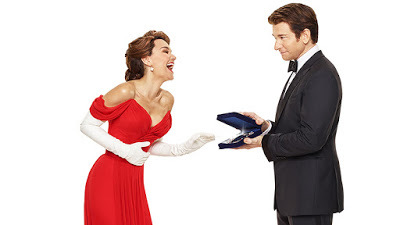 The Broadway version
The Broadway version
Published on May 17, 2019 10:40
May 14, 2019
And Here’s to You, Doris Day: The Woman who Didn’t Become Mrs. Robinson
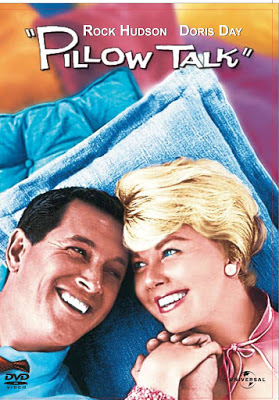
The tributes pouring in for Doris Day (who left us Monday morning at age 97) do not mention one tidbit I find unforgettable. Day was the first choice of producer Larry Turman and director Mike Nichols to play the predatory Mrs. Robinson in their film adaptation of The Graduate. Forget the fact that Day’s image was that of a virginal –or at least a prim and proper—young woman with a sunny disposition and a great capacity for love, as opposed to sex. In such mid-century comedies as Teacher’s Pet, Pillow Talk, and Lover Come Back, she’s the perky innocent who lands the hunky guy because of her winning combo of smarts, sass, and sheer unadulterated goodness. Which is why Turman and Nichols, who enjoyed casting against type, loved the idea of her playing the scheming adulteress who lures Benjamin Braddock into the sack
My Seduced by Mrs. Robinson: How The Graduate Became the Touchstone of a Generation tells the tale. Back when The Graduate was just a modestly-selling novel waiting to be made into a screenplay, Turman sent the book to Day to ascertain her interest in the project. (It was clear to the production team that the Mrs. Robinson role was the one that required an established star, someone who could fill the seats of movie houses.), Turman has said the idea was to subvert Day’s wholesome, bubbly image by showing her in rebellion against the social rules that governed her earlier films. Day long maintained, in her memoir and elsewhere, that she refused the part because it offended her values. But Turman insists that when he sent her Charles Webb’s novel, it was withheld from Day by her husband and manager, Martin Melcher. Fittingly for a woman whose onscreen persona defines the fifties, Day’s course of action was predetermined, in this and other matters, by the domineering man she married.
Which shouldn’t imply that Doris Day was not a rule-breaker in her own right. Though her roles bought into 1950s standards of sexual conservatism, she was not portrayed as being without libido. In Lover Come Back, for instance, her character (a New York ad exec) comes very close to succumbing to the seductive moves of arch-rival Rock Hudson, but (phew!) her honor is saved by a timely phonecall. And Molly Haskell, whose From Reverence to Rape: The Treatment of Women in the Movies is the essential work on the subject, informed me that as a young woman growing up in Richmond, Virginia, she admired Day not for her sexual standards but because, in an era that exalted the happy housewife, Day was generally portrayed as a working woman—a writer, an executive, a college prof--making it on her own in the big city.
It’s a mistake to underestimate Doris Day’s professionalism. As a big band singer, she idolized Ella Fitzgerald, whose exuberant style resembles Day’s own. As an untrained but potent actress, she starred in thrillers (The Man Who Knew Too Much, Midnight Lace) and a schmaltzy musical biopic (Love Me or Leave Me) as well as romantic comedies. And of course her 1945 performance, along with Les Brown’s Band of Renown, of one of my favorite songs, “Sentimental Journey,” will never be equaled.
Romantically speaking, Day knew what it was like to suffer. She was married four times, and the mismanagement of her assets by her abrasive third husband, Melcher, nearly brought her career to a halt. In later years she seemed to prefer animals to people, and her charitable work on behalf of her furry friends is one more reason we’ll remember her fondly.
Published on May 14, 2019 12:48
May 10, 2019
How Hollywood Made Ted Geisel Seussical
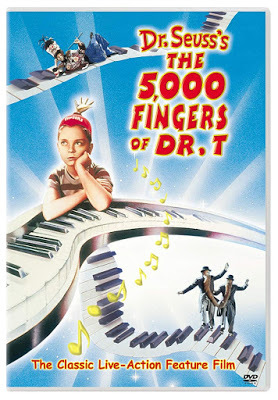
My friend Brian Jay Jones’s deft and delightful new biography, Becoming Dr. Seuss , shows how writer and cartoonist Theodor Geisel transformed children’s literature, making it far funnier and more visually compelling than anything that had gone before. In the process he ended up revolutionizing the way generations of kids have learned to read. For these accomplishments, he won the love of countless fans. Yet on a personal level, his life had more than its share of sadness, even though Geisel was someone who kept his emotions locked up tight. Brian presents us with all the details, then lets us decide whether the good doctor was in fact a good man.
I leave it to readers to discover the heartache that marred Geisel’s life. Instead, I’m focusing on how this writer and artist was shaped by Hollywood. As he once explained to the Saturday Evening Post, “I learned more about writing children’s books when I worked in Hollywood than anywhere else. For in films, everything is based on coordination between pictures and words.” From the time of his earliest picture books, like Horton Hears a Who, Geisel was struggling to make his whimsical drawings mesh with his love of wacky words. But he hardly started out planning to be a children’s book author. His first career was in advertising, and he made a nice living promoting unlovable products like pesticides. (His “Quick, Henry, the Flit!” campaign made the phrase into a national mantra.)
World War II changed everything. Geisel was recruited to join the U.S. Army by none other than Frank Capra, the Oscar-winning director of You Can’t Take It With You, Mr. Deeds Goes to Town, and It Happened One Night. Once the ultra-patriotic Capra enlisted, he was named a lieutenant colonel in the Signal Corps, charged with overseeing a unit that produced training films and other materials to help in the war effort. Geisel’s cartooning talents and story sense were quickly put to use in animated shorts that found colorful ways to instruct G.I.’s about the ins and outs of life in a combat zone. (One favorite Geisel creation, the lovable but inept Private Snafu, led him to work closely with talented young animators Ray Harryhausen and Chuck Jones.) Geisel never forgot his debt to Capra. As Brian explains, “It was Capra who helped him understand the need for tight pacing and concise storytelling and—most important—the wonderfully useful skill of storyboarding.
We don’t tend to think of Dr. Seuss as a maker of movies, but Geisel had a role in three Oscar-winning films within the span of five years. In 1946, he seethed when the Oscar for Best Documentary Short went to something called Hitler Lives?, a film cribbed almost entirely from Geisel’s own Your Job in Germany. The following year, while writing and illustrating one of his early children’s classics, McElligot’s Pool, he was also revising another of his wartime films, Your Job in Japan, into an RKO documentary feature re-christened Design for Death. This muddled project was lambasted by critics, but still won a 1948 Oscar. Then in 1950, a character he’d created, the very noisy Gerald McBoing-Boing, became the hero of an Oscar-winning animated short of which he could be legitimately proud.
Geisel’s Hollywood dreams continued when he was paired with a young producer named Stanley Kramer for the making of a live-action musical, The 5000 Fingers of Dr. T. Geisel’s tale of a sinister piano teacher and his two-story piano must have sounded fresh and original, but. I’ve actually seen this creepy film. Children (and grown-ups) would be well advised to stay away.
Published on May 10, 2019 13:26
May 7, 2019
Tootsie’s on a Roll, and Other Hollywood-to-Broadway Stories
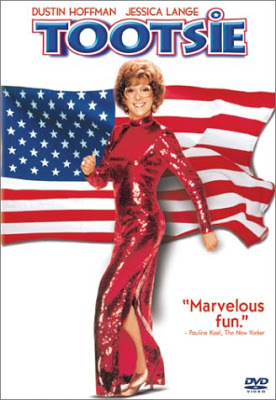 Not long ago, Hollywood welcomed Broadway hits with open arms, especially when it came to musical theatre. Such blockbusters of the Great White Way as Oklahoma!, The Sound of Music, My Fair Lady, and Fiddler on the Roof were rushed onto soundstages, and many of them went on to score major dividends when awards season rolled around. Though movie musicals based on stage hits are hardly as big at today’s box office as they once were, studios continue to make them from time to time. Steven Spielberg, of all people, is currently daring to redo the glorious West Side Story, which in 1961 moved from Broadway to the big screen, nabbing ten top Oscars along the way.
Not long ago, Hollywood welcomed Broadway hits with open arms, especially when it came to musical theatre. Such blockbusters of the Great White Way as Oklahoma!, The Sound of Music, My Fair Lady, and Fiddler on the Roof were rushed onto soundstages, and many of them went on to score major dividends when awards season rolled around. Though movie musicals based on stage hits are hardly as big at today’s box office as they once were, studios continue to make them from time to time. Steven Spielberg, of all people, is currently daring to redo the glorious West Side Story, which in 1961 moved from Broadway to the big screen, nabbing ten top Oscars along the way.In recent years, however, Broadway has often found itself struggling to come up with ideas for stage musicals, especially those with appeal for out-of-towners visiting the Big Apple. So hit Hollywood romcoms have come to be a reliable source of stories ready to be musical-ized. Obviously, the idea is that familiarity breeds box-office. Not long ago, there was Legally Blonde, a forgettable stage show that racked up Tony nominations and ran for over a year. And, with varying degrees of success, Broadway folks have made musicals out of 9 to 5, The Full Monty, Kinky Boots, and Spielberg’s caper comedy, Catch Me If You Can. The current crop includes a version of Beetlejuice: it’s now up for eight Tonys including Best Musical. Less successful by far has been last summer’s stage translation of Pretty Woman, as well as (believe it or don’t) a musical King Kong.
But the top Tony vote-getter based on a Hollywood movie has got to be Tootsie, which pulled in eleven nominations. (The prizes will be awarded on June 9, in a televised ceremony hosted by the inevitable but adorable James Corden.) Among the elements that make Tootsie sing are a dynamite performance by Santino Fontana, who follows in Dustin Hoffman’s high-heeled footsteps. There’s also the fact that this show doesn’t try to be a musicalized clone of the Hollywood original. Clever writing turns Michael Dorsey/ Dorothy Michaels from an unlikely soap opera queen into the unexpected star of a formerly lackluster Broadway musical. And the film’s take on misogyny in showbiz is smartly updated to make sense in the #MeToo era.
Among Tony nominations for acting are (as always) many Hollywood favorites, including Adam Driver and Annette Bening, Two film stars have won nominations by take the leading roles in dramatic plays based on classic films. Jeff Daniels stars in a stage adaptation of To Kill a Mockingbird, while Bryan Cranston is favored to take home a Tony for playing the Peter Finch role in a Broadway production of Network. Curiously, neither of these dramas is up for Best Play. Perhaps the voters in this category are awarding points for originality, and don’t feel that adaptations measure up to entirely new works.
Whoever decided on the nominations for Best Musical obviously had no such qualms. Which means Tootsie, despite stiff competition from a very offbeat new musical called Hadestown, could well carry home the top Tony prize. (Hadestown, which leads all shows with 14 noms, is actually an adaptation of the classic story of Orpheus and Eurydice – originality only goes so far!) In honor of Broadway’s new Tootsie, I just re-watched the film original, delighting once again in its sly humor and brilliant performances. But now I can’t wait to see Dorothy put on her dancing shoes, though I can’t help wondering how men always manage to grab the best parts, even when they’re masquerading as women.
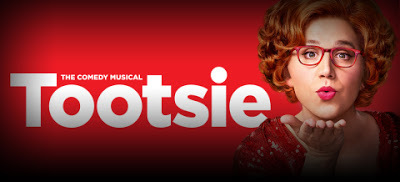
Published on May 07, 2019 09:31
May 2, 2019
The Mystery of the Missing Horse: “Taking Shergar”
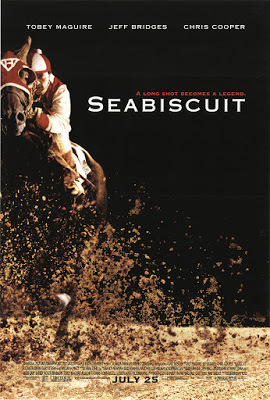 Horseracing has suffered a black eye lately in SoCal. At Arcadia’s venerably beautiful Santa Anita Park, all racing was suspended in March of this year, following fatal injuries to 23 Thoroughbreds. The impact of heavy rains on Santa Anita’s dirt tracks may have contributed to the death toll, but its cause still remains a mystery. Not nearly so great a mystery, though, as the fate of the Irish-born Shergar, a onetime European Thoroughbred Horse of the Year who in 1981 won the Epsom Derby by ten lengths, a record that still stands.
Horseracing has suffered a black eye lately in SoCal. At Arcadia’s venerably beautiful Santa Anita Park, all racing was suspended in March of this year, following fatal injuries to 23 Thoroughbreds. The impact of heavy rains on Santa Anita’s dirt tracks may have contributed to the death toll, but its cause still remains a mystery. Not nearly so great a mystery, though, as the fate of the Irish-born Shergar, a onetime European Thoroughbred Horse of the Year who in 1981 won the Epsom Derby by ten lengths, a record that still stands. After falling to fourth place in his eighth race, Shergar was retired to stud on an Irish farm called Ballymany (not a bad form of retirement, all things considered). But in 1983, on the cold dark night of February 8, three men roughed up stud groom James Fitzgerald and his family, then spirited the horse away from his stall. The best guess, and there have been many over the years, is that the men were foot soldiers for the Irish Republican Army, and that the abduction was a scheme to raise money for the cause by way of demands for ransom. In fact, some ominous phone calls did demand that Shergar’s owners cough up a major cash payment in exchange for the horse’s release. But, early on, the phone calls stopped coming. And from that day to this, Shergar’s whereabouts have remained unknown.
This is very much in my mind right now, because I’ve just finished reading Taking Shergar , written by my friend and colleague, Milton C. Toby. Milt, who’s currently the national president of the American Society of Journalists and Authors, hails from Kentucky, a state that has its own passion for horseracing. An attorney as well as an author, Milt is a recognized expert in equine law. He’s written about Thoroughbreds for forty years, The subtitle of the current book, which is part of the Horses in History series from the University Press of Kentucky, is Thoroughbred Racing’s Most Famous Cold Case. In it Milt thoroughly examines all the aspects of the crime, including its many colorful personalities. (One, an Irish police superintendent, bears an uncanny resemblance to Peter Sellers as Inspector Clouseau.) The one thing Milt can’t do, though, is provide an ending for the story. What happened to Shergar we’ll probably never know.
Filmmakers have tried their best to bring Shergar to the screen. There was a BBC television play in 1986, as well as a 1999 film starring Ian Holm and Mickey Rourke. The description of the latter, simply titled Shergar, sounds horrible treacly: “Shergar is based on the true story of a champion race horse, allegedly abducted by the I.R.A., then rescued by an orphaned boy.” I don’t know where that orphaned boy came from, but it’s a sad fantasy to think that Shergar was ever rescued. Much more fact-based were two TV documentaries, the Irish-made Who Kidnapped Shergar? (from 2004) and last year’s Searching for Shergar from the BBC. What’s obvious from all of this is that in some circles, the racehorse has never been forgotten.
There’s something about horses on screen that warms many hearts. Remember a very young Elizabeth Taylor riding The Pie to glory in 1944’s National Velvet? Remember Kelly Reno and a wizened Mickey Rooney training a champion in 1979’s The Black Stallion? The most inspiring of the lot may be Seabiscuit, the 2003 equestrian biopic based on Laura Hillenbrand’s history of the undersized, overlooked racehorse whose triumphs helped Americans survive the Great Depression. Would that Shergar’s story ended on such a winning note.
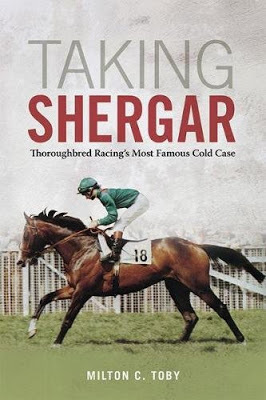
Published on May 02, 2019 08:54
April 30, 2019
Losing Another Boy from the Hood: An Appreciation of John Singleton

John Singleton gone at age fifty-one?
Mortality is much on my mind right now, alas. Some very nice people in my orbit have succumbed to illness far too quickly, and of course we’re all aware that the crazies are out there, gunning down anyone they perceive as “different.” But you just don’t expect a talented director/producer to be felled by a stroke smack in the middle of what used to be called middle-age.
Good thing Singleton started out early. He’s still best known for writing and directing 1991’s Boyz n the Hood, a complex family drama set in South Central L.A. that was already in his head when he was applying as an undergraduate to the prestigious USC School of Cinematic Arts. Influenced by Spike Lee’s Harlem-based landmark film, Do the Right Thing, Boyz n the Hood tells an L.A. story that has nothing to do with swimming pools and mansions. It begins with a small group of inner-city young boys who flirt with sports and gang-banging, then returns to them seven years later when the allure of sex and of violent retribution threatens their paths away from the urban ghetto.
While at USC, a school known for its solid gold links to the film industry, Singleton came to an important realization: "I learned that no one was going to write the films I wanted to do except for me. No one was going to have the vision to tell the stories that I wanted to tell except for me." Fortunately, despite his youth, Hollywood proved open to what he had to say. As a mere sophomore, he signed with an agent at the powerful CAA. By the time he reached his senior year, he was inking a deal with Columbia Pictures to shoot his script for what was then called Summer of ’84. He knew from the start that he’d occupy the director’s chair, later saying, "I wasn’t going to have somebody from Idaho or Encino direct this movie." Despite his lack of experience, Columbia ultimately allowed the newbie director to shoot the film in continuity, so that it’s possible to watch him becoming more and more adept as the seven-week shoot wore on.
Among Singleton’s cast for Boyz n the Hood were such prominent players as Laurence Fishburne and Angela Bassett, as the estranged parents of central character Tre Styles. The part of Tre was the first major role for future Oscar winner Cuba Gooding Jr., while Ice Cube and Morris Chestnut made their screen debuts in other key roles. The movie itself was a huge success, with Singleton Oscar-nominated both for Best Original Screenplay and Best Director honors. In the latter category, he was the first African-American ever to be nominated. At 24, he was also the all-time youngest nominee in the directing category.
Singleton has strongly influenced such hot African-American directors as Barry Jenkins and Jordan Peele. But, though he never again achieved the celebrity he enjoyed with Boyz n the Hood, he was hardly a one-hit wonder. His later films as a director included Rosewood, 2 Fast 2 Furious, and the 2002 remake of Shaft, with Samuel L. Jackson playing the blaxploitation hero.. As a producer, he helped finance and launch the memorable 2005 indie, Hustle and Flow, which garnered an Oscar nom for Terrence Howard’s lead performance and won for the unlikely rap song, “It’s Hard Out Here for a Pimp.” As recently as 2013, Singleton was announced as the director of a major Tupac Shakur biopic. It didn’t happen. Unfortunately, that’s one movie we’ll never get to see.
Published on April 30, 2019 13:36
Beverly in Movieland
I write twice weekly, covering topics relating to movies, moviemaking, and growing up Hollywood-adjacent. I believe that movies can change lives, and I'm always happy to hear from readers who'd like t
I write twice weekly, covering topics relating to movies, moviemaking, and growing up Hollywood-adjacent. I believe that movies can change lives, and I'm always happy to hear from readers who'd like to discuss that point.
...more
- Beverly Gray's profile
- 10 followers



